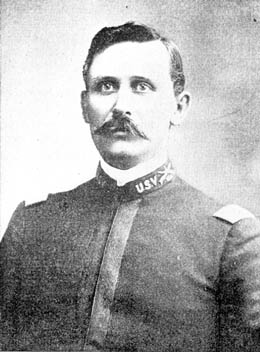On February 8, 1900, two Seattle volunteers who died in the Philippine Islands during the Philippine-American War are buried at Lake View Cemetery after a funeral parade that begins at the Seattle Armory. They are Captain George H. Fortson and Private Royal E. Fletcher of the First Washington Volunteer Regiment.
The two men had died in the Philippines almost a year earlier. Their remains were sent by ship back to Seattle by way of San Francisco. Captain George Hayley Fortson, a former Seattle City Attorney and husband of Minnie Frye, was commander of Company B. He died on March 27, 1898, of wounds received in a skirmish at the Pasig Delta Campaign the previous day. Since the beginning of the conflict in 1898, in which Filipinos resisted the U.S. control of the Philippines, more than 1,000 American soldiers had died, most of them from non-combat causes such as disease.
In the late nineteenth century, Spain had been the colonial power that controlled the Philippine Islands, despite nationalist rebellions. On April 21, 1898, the United States declared war on Spain and on May 1, 1898, the Asian squadron of the U. S. Navy destroyed the Spanish fleet in Manila Bay. Spain conceded control of the Islands to the U.S. military. Filipino nationalist forces, led by Emilio Aguinaldo (ca. 1870-?), refused to accept American domination, and the Philippine-American War (generally referred to in America at the time as the Philippine Insurrection) began. The conflict lasted from 1899 until 1902, when U.S. civil government replaced the military authority and William Howard Taft (1857-1930), later U.S. president, became the first civil governor on July 4, 1902.
George Fortson was memorialized in 1901 with dedication of a small public park, Fortson Square, at the southeast corner of Yesler Way and 2nd Avenue in Seattle. Seattle-area Spanish American War volunteers are also honored with a statue in the southwest corner of Woodland Park.

